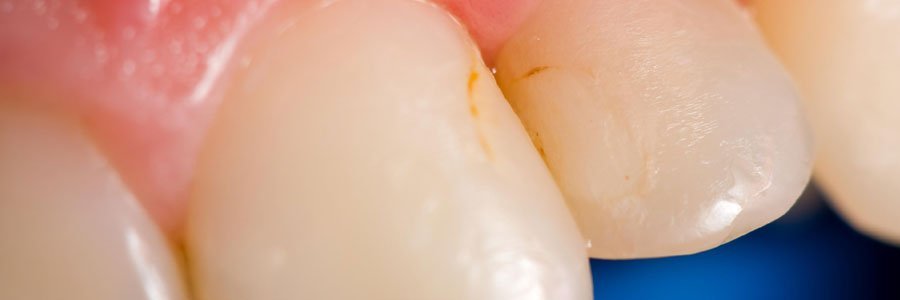A very common cause of tooth discolouration is a childhood injury called a pulpal bleed or bruise of the tooth due to force or trauma.
This doesn’t necessarily mean that the tooth is non-vital. An evaluation by a professional dentist is recommended for a definitive diagnosis.
Your teeth can also become discoloured by stains on the surface or by changes inside the tooth.
Types of Tooth Discolouration
There are three main types:
1. Extrinsic
This occurs when the outer layer of the tooth (the enamel) is stained. Coffee, wine, cola or other drinks or foods can stain teeth. Smoking also causes extrinsic stains.
2. Intrinsic
This is when the inner structure of the tooth (the dentin) darkens or gets a yellow tint.
You can get this type of discolouration if:
- You had too much exposure to fluoride during early childhood.
- Your mother used tetracycline antibiotics during the second half of pregnancy.
- You used tetracycline antibiotics when you were 8 years old or younger.
- You had trauma that affected a tooth when you were a young child. A fall, for example, may damage the developing permanent tooth.
- You had trauma in a permanent tooth, and internal bleeding discolored the tooth.
- You were born with a rare condition called dentinogenesis imperfecta. This causes gray, amber or purple discolourations.
3. Age-related
This is a combination of extrinsic and intrinsic factors.
Dentin naturally yellows over time. The enamel that covers the teeth gets thinner with age, which allows the dentin to show through.
Foods and smoking also can stain teeth as people get older.
Finally, chips or other injuries can discolor a tooth, especially when the pulp has been damaged.
Treatment Options
Professional Cleaning
Many extrinsic stains caused by food and drink can be removed by regular professional cleanings and home care. Good home care includes brushing, flossing and rinsing after meals.
At-Home Teeth Whitening
It’s also possible to remove discolouration at home. You can purchase an at-home teeth whitening kit from your dentist.
However, at-home solutions may not be as effective as those applied by your dentist. This means that the process takes longer — usually two to four weeks.
You also can buy whitening products over the counter. They contain a weaker bleach than the products you can get from your dentist. The whitening agent is applied as a gel placed in a mouthpiece or as a strip that sticks to your teeth.
Over-the-counter mouthpieces fit less securely than the kind you get from your dentist, but they will lighten your teeth over time.
Whitening Toothpaste
Whitening toothpaste may remove minor stains. They do not actually change the overall colour of your teeth.
If your tooth has darkened after a root canal, bleaching the enamel won’t help. Your dentist can apply a bleaching material to the inside of the tooth, or you may consider a crown or veneer that cover the outer surfaces of the teeth..
Prevention
- Brushing your teeth after every meal will help to prevent some stains.
- Rinse your mouth with water after having wine, coffee or other drinks or foods that can stain your teeth.
- Regular cleanings by a dental hygienist also will help to remove surface stains.
- To prevent intrinsic stains in children, avoid too much early exposure to fluorides. Once the enamel is formed, fluoride will not discolour teeth.
When To Call a Professional
Tooth discolouration is mainly a cosmetic dental problem. Visit our Vancouver dental office if you’re unhappy with how your teeth look. Any change in a child’s normal tooth colour should be evaluated by a dentist.
If you have any more questions or concerns regarding which dental treatment is best for your situation, there are multiple ways to reach us:
- Simply give us a call at (604) 261-1943;
- Fill out our appointment form; or
- Drop by our dental office as we are always happy to accept new patients.





